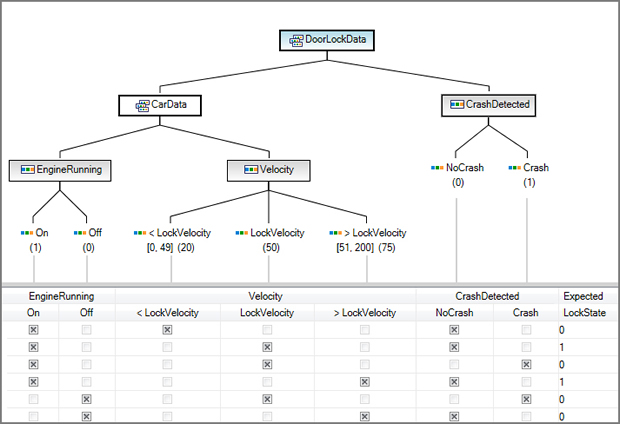Efficient test case definition with classification tree method
When testing vehicle ECU software, one of the most important tasks is determining the right test cases. The latest version 2.1 of the test design tool vTESTstudio from Vector offers support for this task with its new graphical editor for the Classification Tree Method.
This method helps both the OEM’s and the supplier’s test designer to reduce the number of test cases to what is relevant and thus test efficiently and with the highest level of quality. Due to the complexity of the software, for both technical and economic reasons it does not make sense to test the behaviour of current vehicle ECUs in all conceivable scenarios – the number of potential input values for an ECU function is extensive.

vTESTstudio 2.1 makes it possible to identify the test cases that must be covered at a minimum in order to uncover as many errors as possible in the system under test (SUT).
In the current version 2.1, this is implemented with a graphical editor based on the Classification Tree Method, a systematic method to determine redundancy-free error-sensitive test cases. All aspects that are relevant for a test - so-called classifications (e.g., vehicle speed) - are collected in the graphical interface of the Classification Tree Editor of vTESTstudio.
The input data range is often so large that complete test coverage of all values is not realistic in practice. Therefore the value range of each classification is sub-divided into so-called equivalence classes, e.g., vehicle speed less than 50km/h.
“The idea behind forming equivalence classes is that the same behavior of the SUT is expected for all values within a class,” explained Ute Katranski, Product Manager for vTESTstudio at Vector.
He added: “Thus it is completely sufficient to consider exactly one representative from each equivalence class, which markedly reduces the number of test cases, allowing significantly more efficient utilisation of the test resources.” Furthermore, expected values, for example, door locking mechanism closed/open, can be added to manually or automatically create combinations of representatives of various classifications to make them into complete test vectors.
The test cases defined in this way are then executed automatically in real time in CANoe, the Vector software tool for developing and testing ECUs, and detailed reports are created.







